THE LINK to #urbanana:
Cologne Bonn Airport – With fanfares and 007
in English: 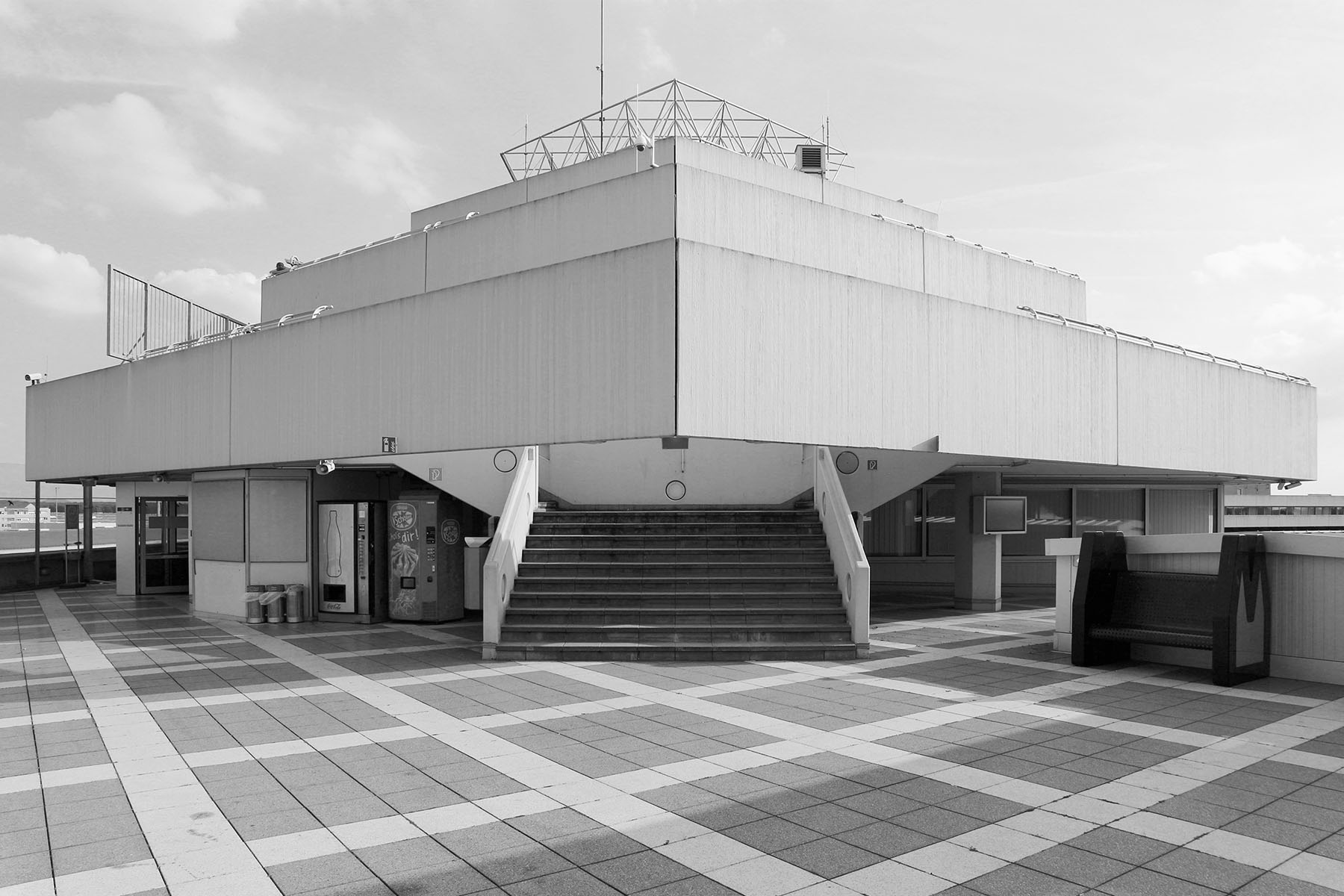
Not only can architecture look good, it can sound good, too. The Cologne Bonn Airport (CGN) has united corporate architecture and corporate acoustics in a pleasant and confidence-inspiring way that makes the airport immediately aurally recognisable. The voice of James Bond (the German version, Frank Glaubrecht dubbing for Pierce Brosnan) is your sound-companion in the airport, coupled with a jingle that you just have to love, so softly does it snuggle into your ears. The sound has something playful about it that fits with the airport’s slogan: “so simple.” Architecture that’s clear and easy, with an unmistakeable airport fanfare.
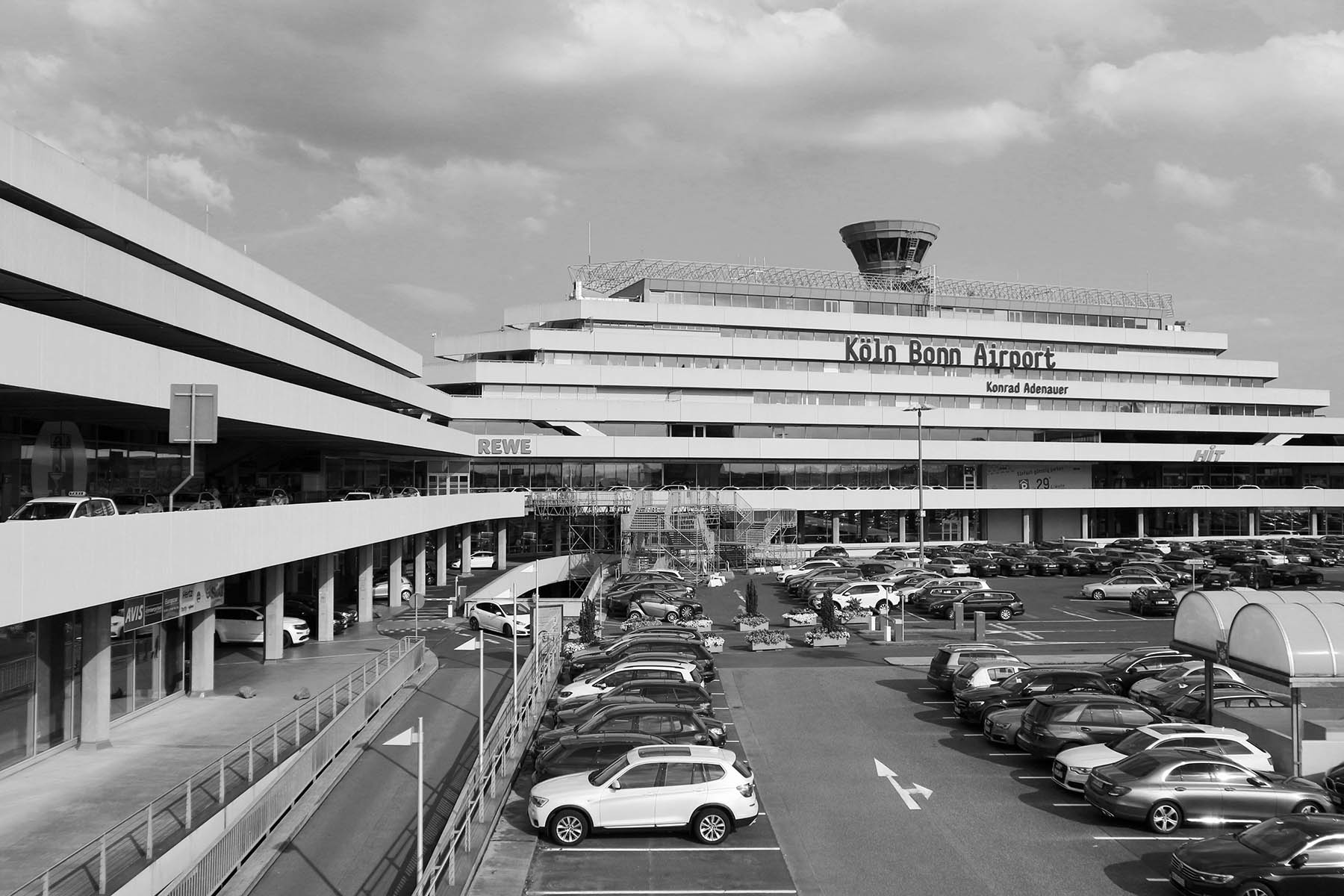
Cologne Bonn Airport
The first terminal was opened in 1970 and designed by the architect Paul Schneider von Esleben (PSE).
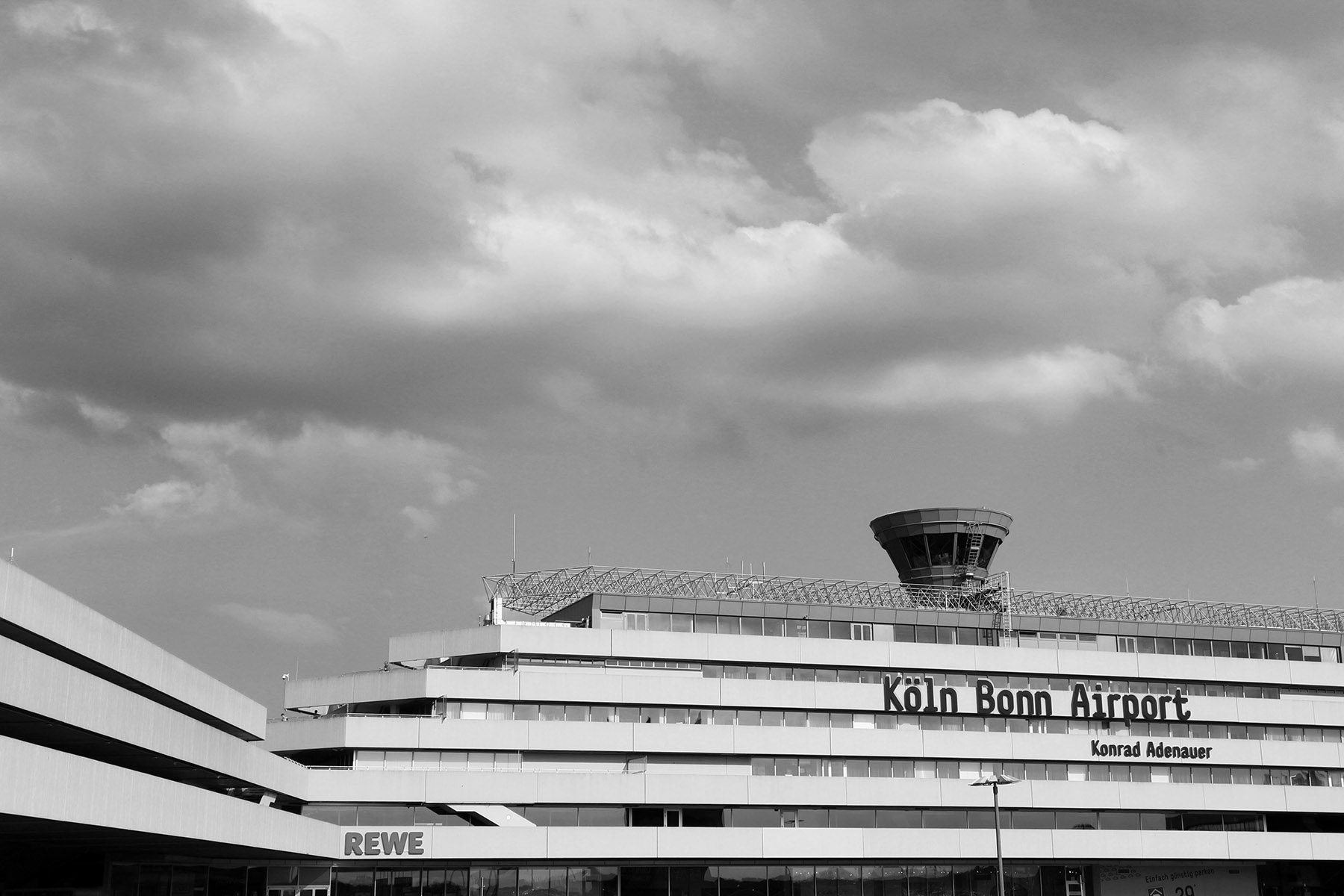
Cologne Bonn Airport
His drive-in concept: an airport with short ways. The “Starwalk” extension was planned by Helmut Jahn, as were Terminal 1 (opened in 2000) and the train station (opened 2004).

Cologne Bonn Airport
Paths, walls and ceilings appear light ...
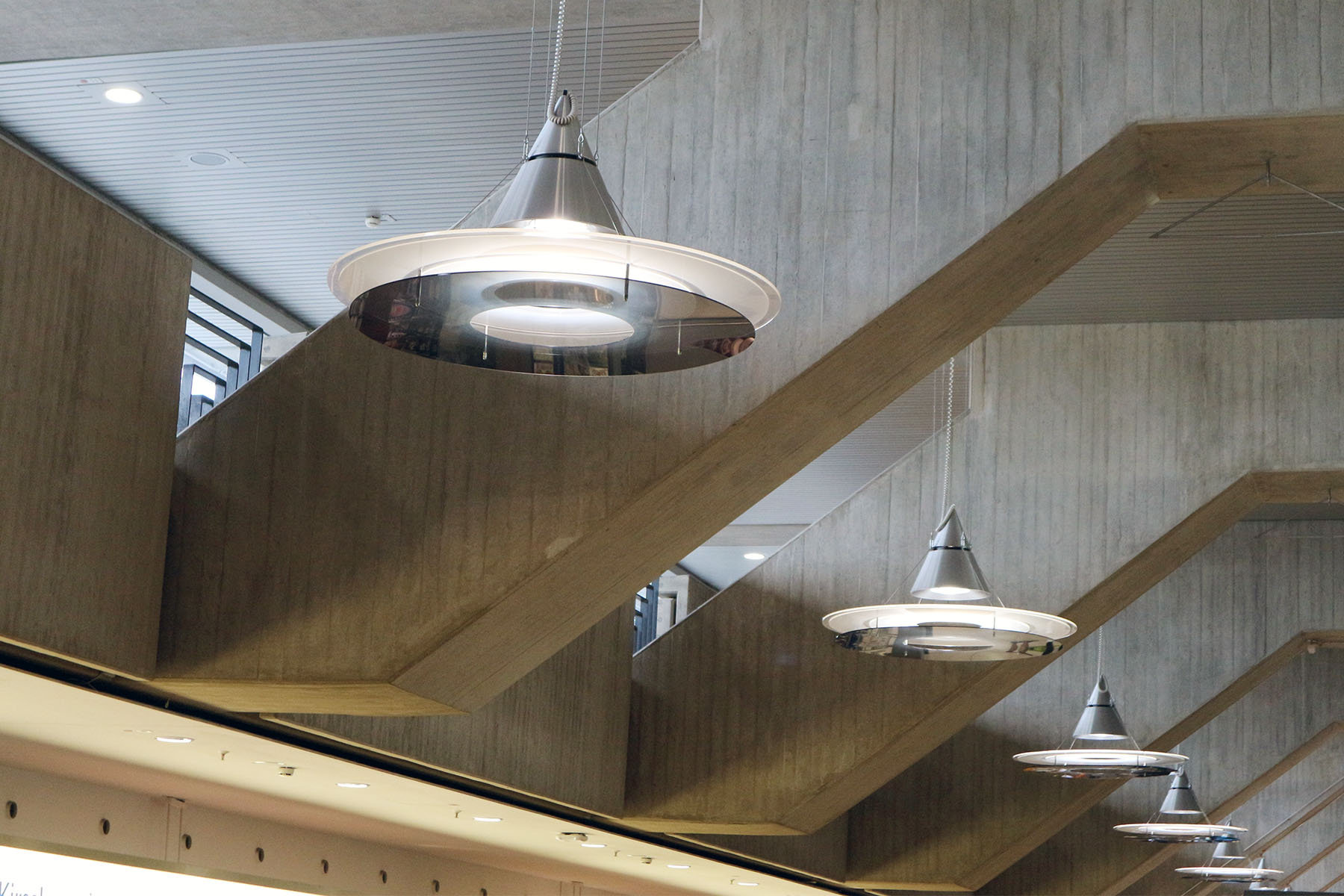
Cologne Bonn Airport
... and luminous.
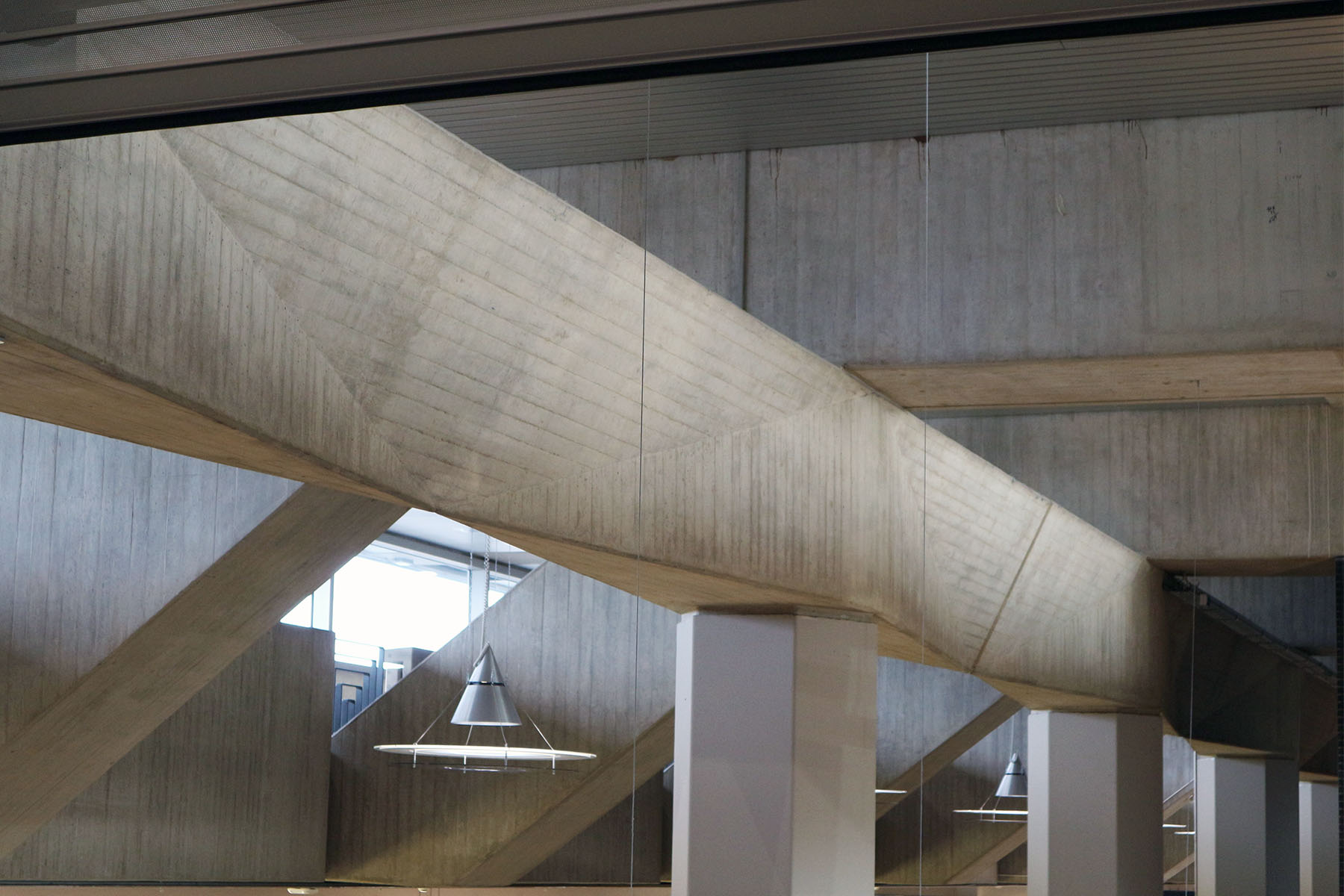
Cologne Bonn Airport
Open, exposed concrete that exudes no earthy, brutalist severity
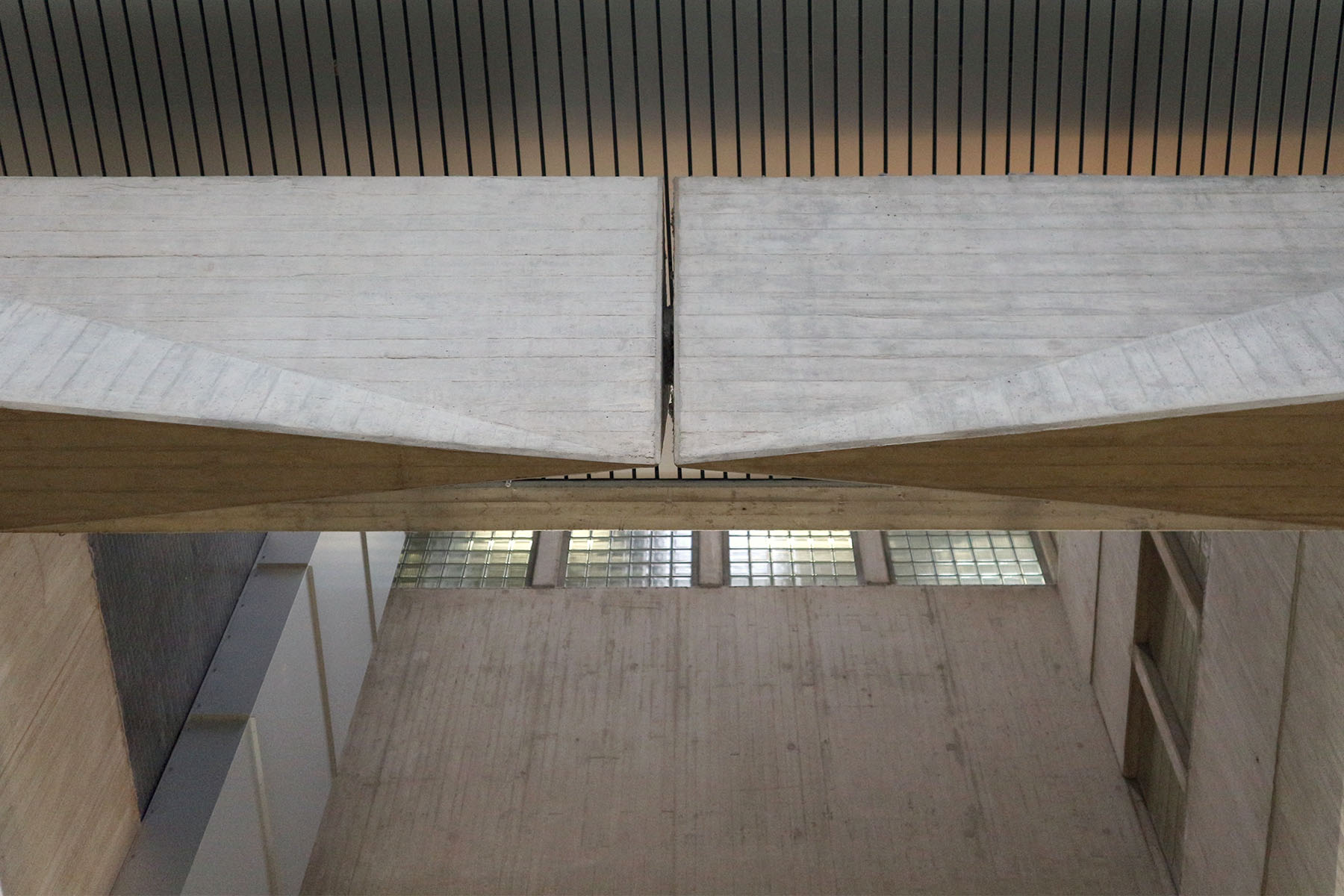
Cologne Bonn Airport
Symmetry ...
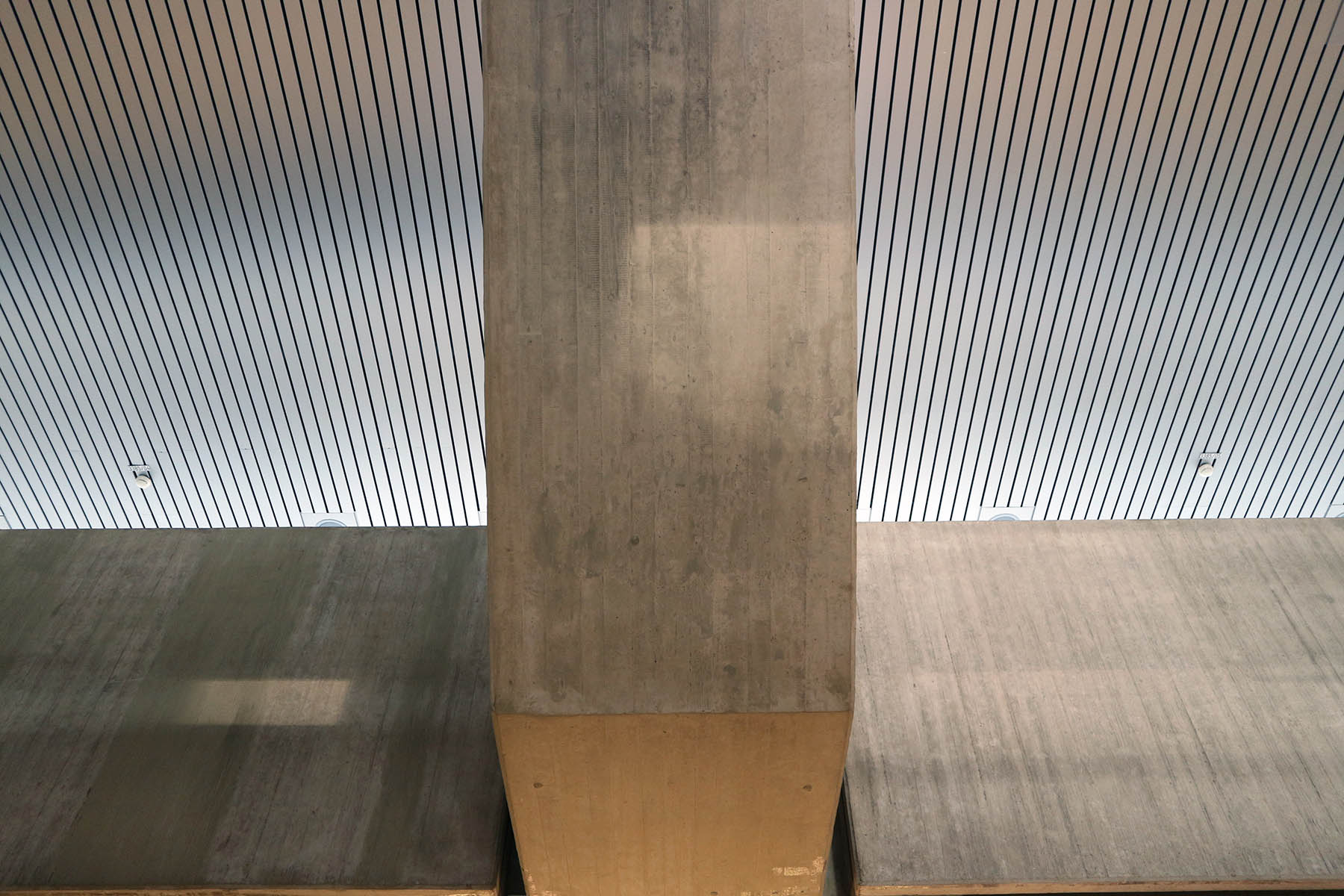
Cologne Bonn Airport
... and lines
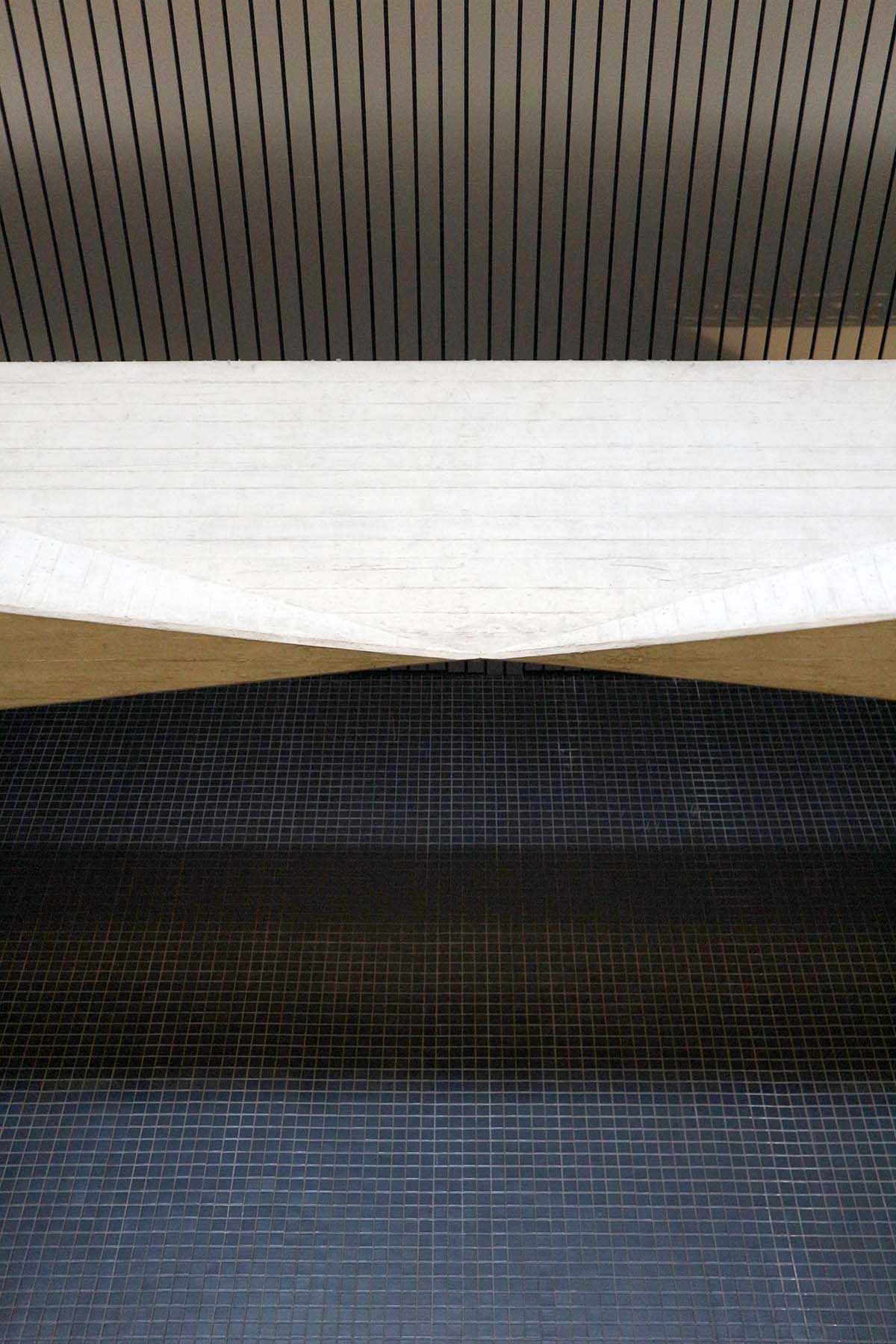
Cologne Bonn Airport
Material mix
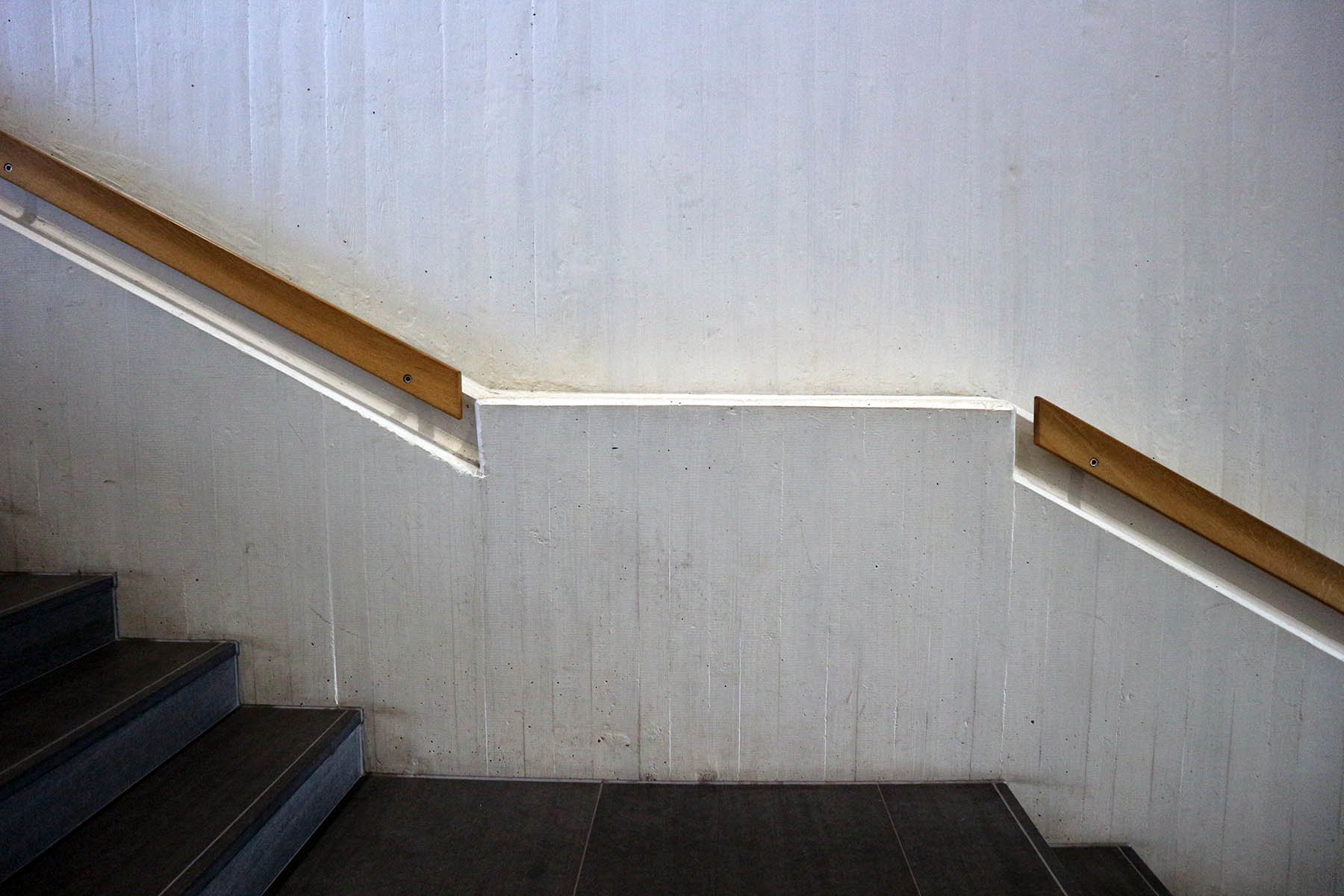
Cologne Bonn Airport
To the observation deck
Anyone familiar with the vast, XXL airports in other parts of the world will enjoy a sense of clarity here, where the short routes are connected in a structure that’s legible for all travellers. CGN is a complex out of time that, purely because of its old-fashioned arrangement, falls out of today’s usual mega-giga-framework. It is almost a Tegel-isation of flight. Indeed, the Berlin airport Tegel (TXL), completed in 1974 by Gerkan, Marg und Partner (gmp), resembles the CGN terminal, which was opened in 1970 by Paul Schneider von Esleben (PSE). Both installations are exemplary of the architecture of the 1960s and 1970s, and of the concept of the world’s first drive-in airports, which PSE developed together with Lufthansa. Even today, passengers can drive to the terminals directly from the highway. The airport is framed by the A 3 and A 59 highways, and there is a seamless transition from the feeder road L 84 into the area. The connection between car and airplane was meant to be as short as possible, and has remained so ever since.
To that end, PSE planned a 500-metre long, terraced reception building that sits enthroned between two star-shaped wings docked on either side. Access routes connect the buildings, with parking lots in between. In the interior: open, exposed concrete that exudes no earthy, brutalist severity, despite its date of origin. On the contrary, paths, walls and ceilings appear light and luminous through its openings and geometric forms.

Cologne Bonn Airport
The new observation deck was reopend in June 2012 and ...
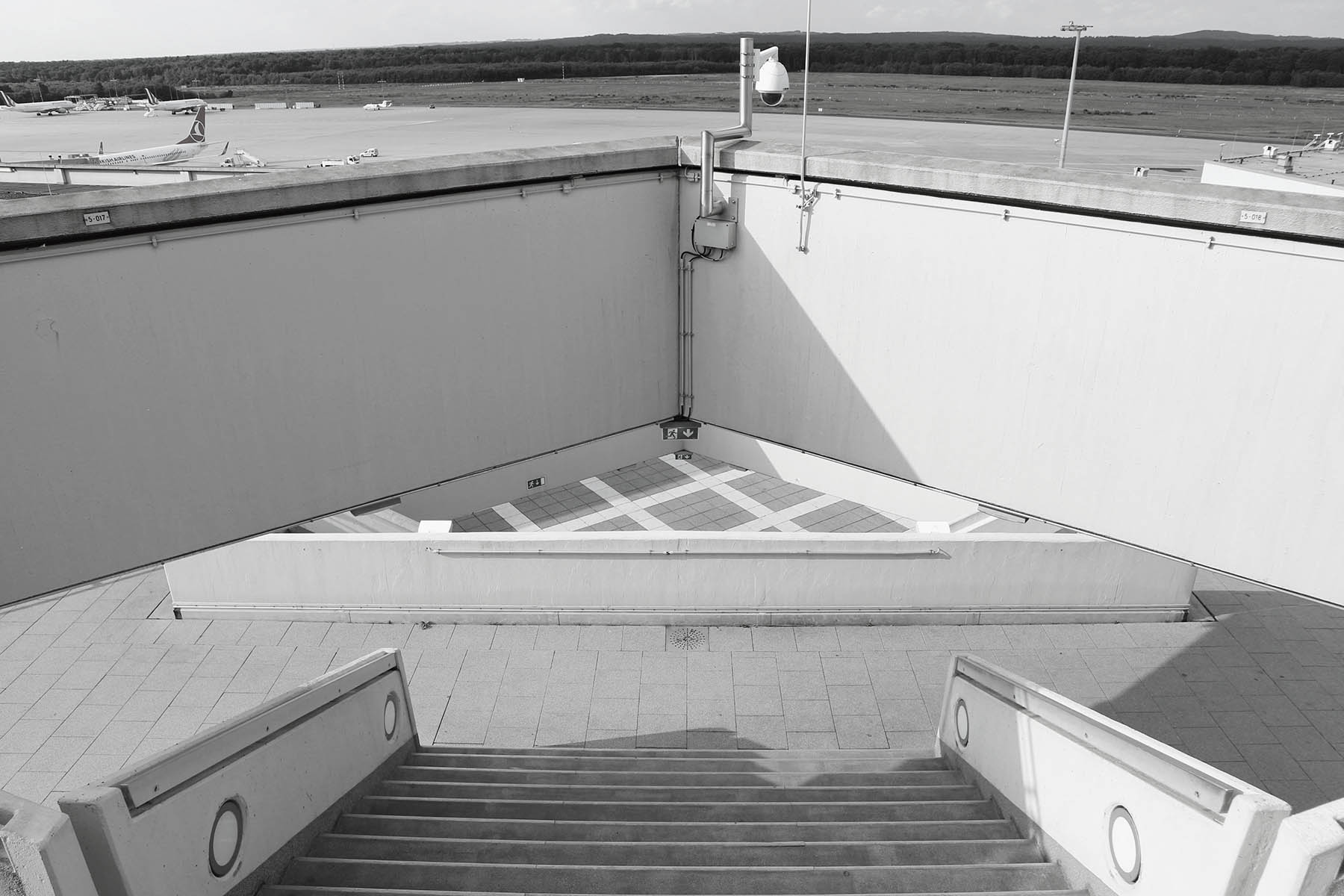
Cologne Bonn Airport
... designed together with the spotter clubs Aviation Friends Cologne / Bonn and CGN Community.

Cologne Bonn Airport
The observation platforms are located at Terminal 1 between B and C, 4 floor.
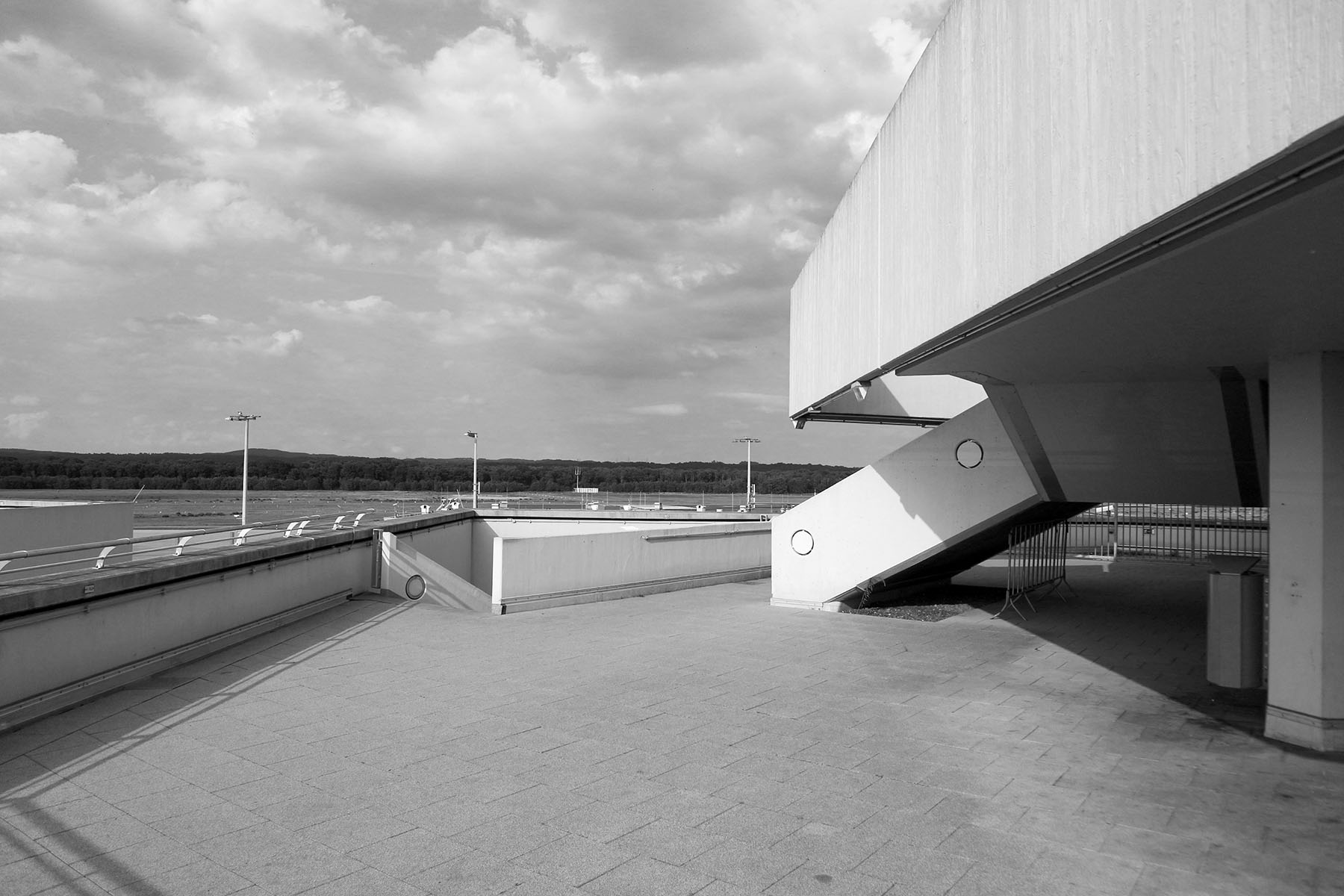
Cologne Bonn Airport
The terrace is open daily from 06.30 to 22.00; admission is free.

Cologne Bonn Airport
Concrete and perspectives

Cologne Bonn Airport
Gangway design
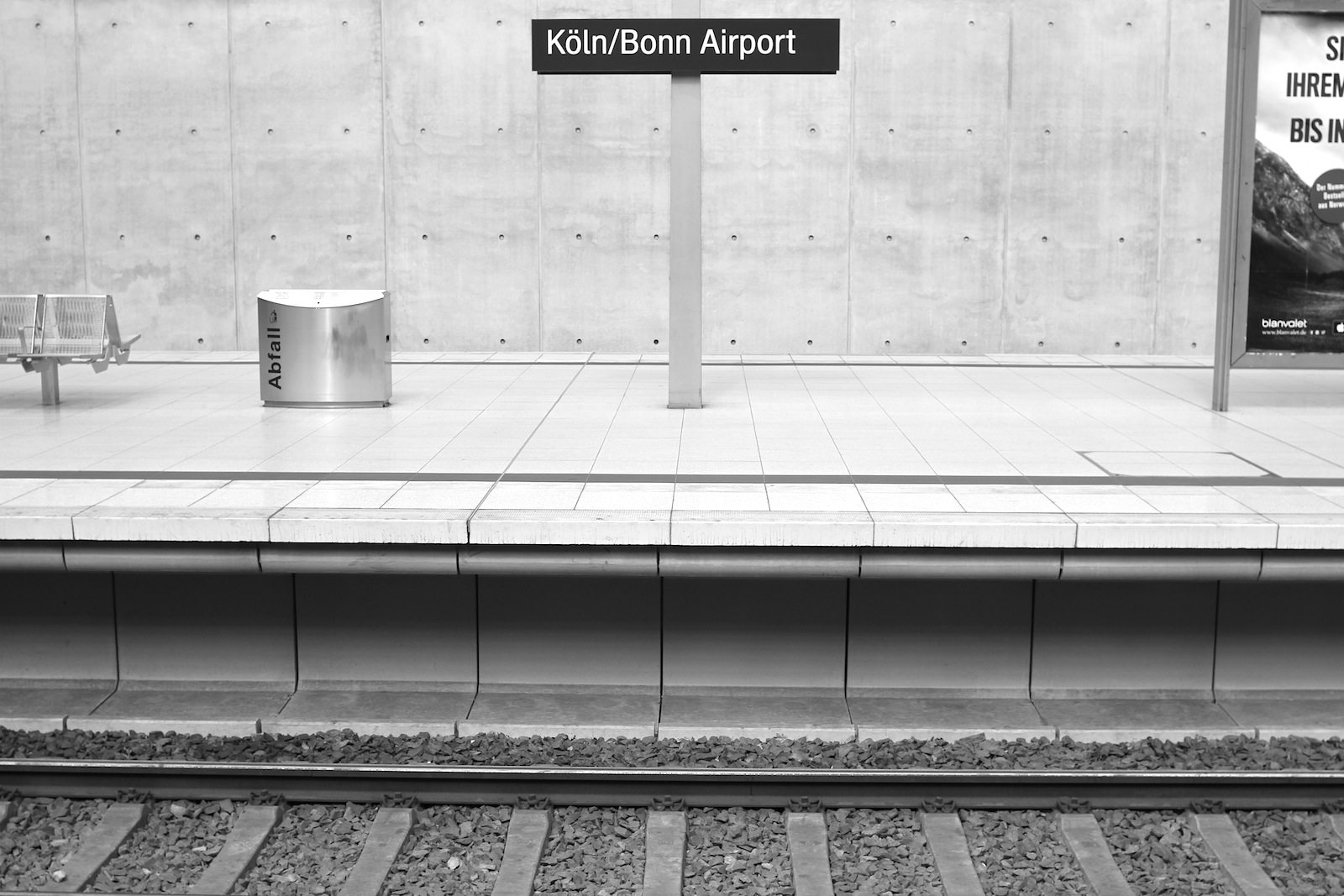
Cologne Bonn Airport
The CGN can be reached directly via highways and express roads as well as with the intercity express train, suburban railways and regional express trains.
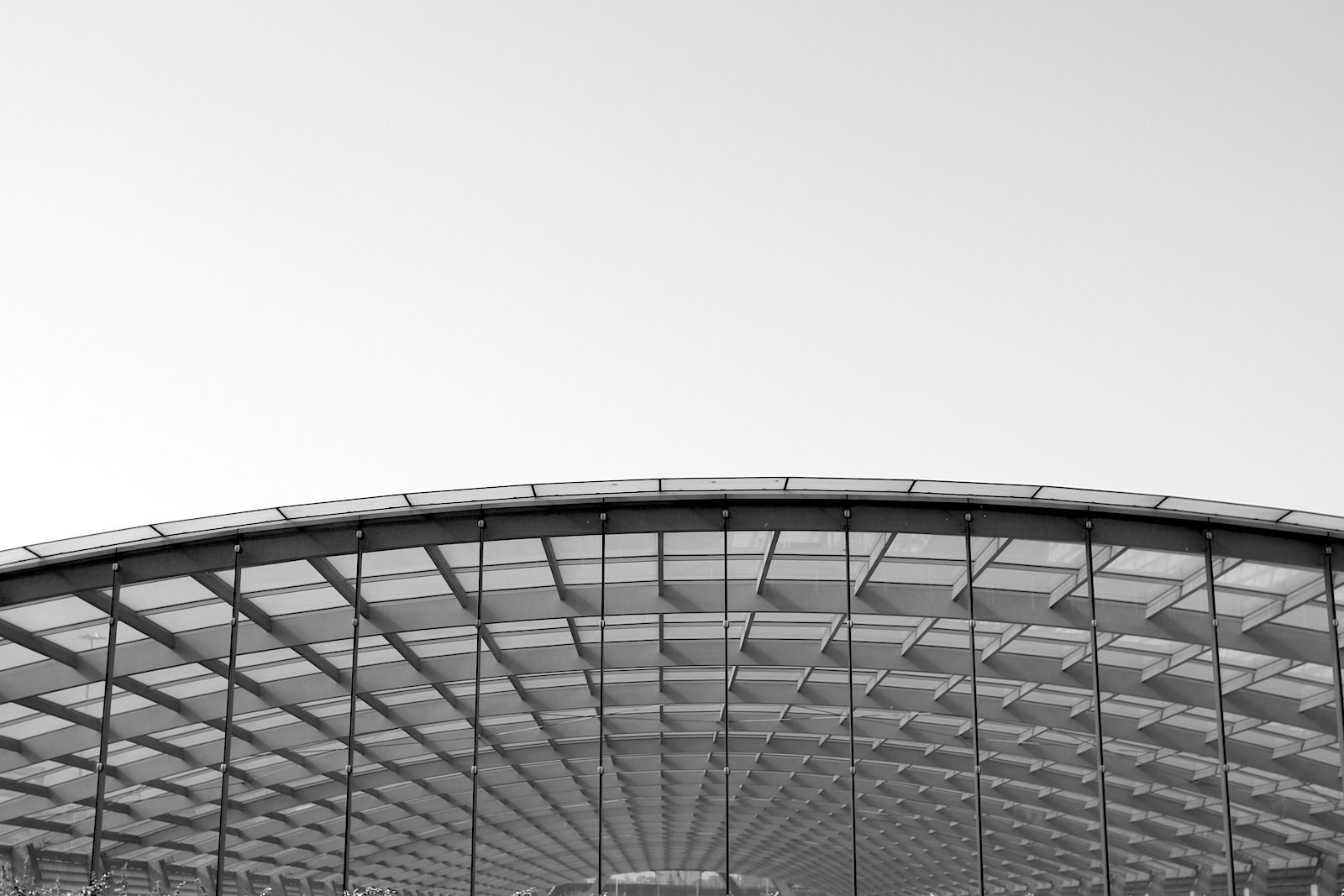
Cologne Bonn Airport
A 20-metre deep rail station with a 156-metre long vaulted glass roof
Three decades later, the terminals were also connected with the railway network of the Deutsche Bahn. For this, Murphy Jahn Architects (along with Schüßler-Plan Ingenieurgesellschaft mbH) designed a 20-metre deep rail station with a 156-metre long vaulted glass roof. From the glass station, it only takes a few minutes to get to the check-in counters. The PSE airport has indeed remained true to its short-distance DNA. Schneider von Esleben was not very happy with the extension, though, especially with the barrel-roofed hall in front of the old main building (likewise designed by Jahn)—so much so that he sued the operating company of the airport for damages due to copyright violations. That situation did not detract, however, from the exemplary transit connections and the appropriate extension of the drive-in idea. The corporate architecture of the airport was very fitting for the zeitgeist of the 21st century: more shopping, more steel and more glass.
The airport is beloved. This fact also has to do with its rank as a low-cost hub in Germany, one which was been repeatedly voted the best regional airport in Europe. If CGN were larger, and had more than its average 10–12 million passengers a year, there would definitely be friction with the state capital. Düsseldorf would be happy to have a large, international business airport. But the small Cologne Bonn Airport is more manageable. And more audible.
"Willkommen in Bonn, Köln-Bonn!"
Cologne Bonn Airport (CGN)
is one of the most important commercial airports in Germany. Since 2002, the Airport has focused increasingly on low-cost business. The autumn of 2015 marked a new era for Cologne/Bonn, with the introduction of low-cost long haul flights to destinations worldwide. Every year, almost 12 million passengers choose to take off or land at the Airport, which in a nationwide comparison ranks number six. Around 30 airlines fly out of Cologne to 129 destinations. Cargo business is also flourishing: With almost 786,000 tons of air cargo in 2016, Cologne Bonn Airport is in third place among airports in Germany, and among the top ten in Europe. Geographically Cologne/Bonn is situated in one of the most densely populated regions in Europe – some 16 million people live and work within a radius of 100 kilometres of the Airport. The Airport is directly and conveniently accessible by motorway or expressway, as well as by Intercity Express (ICE), Regional Express (RE) and Suburban Trains (S-Bahn). The underground Airport Railway Station is centrally located in front of Terminals 1 and 2. More than 14,000 people work at the CGN. In the region 26,000 jobs are dependent on the Airport. The Airport Company itself employs some 1,800 people.
Paul Schneider von Esleben
28 August 1915–19 May 2005, also known as PSE, was a German architect. He studied architecture at the University of Applied Sciences Stuttgart in 1937 and graduated in 1947. He opened an architectural firm in Düsseldorf in 1949. His early designs included the multi-storey car park Haniel Garage, which was constructed in 1951 and made him famous. In 1955 he won a competition to design the expansion of Mannesmann-Hochhaus, Mannesmann's head office in Düsseldorf, which was the first German building to be constructed with a steel frame structure and curtain walls. He worked with artist members of Zero—Günther Uecker, Heinz Mack, Josef Piene and Joseph Beuys—in 1957–1961 to design the Rolandschule. From 1962 to 1970 he oversaw the redesign of the Cologne Bonn Airport into a layout that was adopted by numerous other international airports and led to his being hired as a consultant to architectural projects for many worldwide airports. Schneider-Esleben was a professor at the Hochschule für bildende Künste Hamburg from 1961 until 1972 as well as a visiting professor of the Vienna University of Technology in 1965. He was also a furniture designer, and often created specific furniture designs for his buildings, such as the "PSE 58" chair. Schneider-Esleben's work slowed in the 1970s as his modernist style became outdated in favour of postmodernism. He died in Tegernsee in 2005, aged 89.
Helmut Jahn
born January 4, 1940. A Chicago-based German-American architect, known for designs such as the Sony Center on the Potsdamer Platz in Berlin, Germany, the Messeturm in Frankfurt, Germany, the One Liberty Place in Philadelphia, Pennsylvania (formerly the tallest building in Philadelphia), and the Suvarnabhumi Airport, an international airport in Bangkok, Thailand. Recent projects include a residential tower in New York City, 50 West St in 2016 and the Thyssenkrup Test Tower in Rottweil, Germany in 2017. Jahn joined C. F. Murphy Associates in 1967. Taking sole control from 1981, the firm was renamed Murphy/Jahn. On October 26, 2012, Helmut Jahn renamed Murphy/Jahn to simply JAHN.